New Thinking Required for Church Involvement
Adaptive versus Technical Change and Triple Loop Learning
by Dean Phelan © Copyright 2022. Updated 2025
In 2001, 8% of Australians attended church on any given Sunday. 15% had some church connection on a monthly basis.
In 2024 this had reduced to just under 5% Weekly attendance.
By definition, today at least 95% of Australians are involved in something else other than church on any given Sunday. The vast majority of Australians have voted with their feet as far as being interested in attending a church.
The 2021 Australian Census statistics showed the continuing decline in people wanting to even be affiliated with Christianity. For the first time, fewer than half of Australians identified as Christian in the Census. The share of Australians identifying as Christian has steadily dropped over past decades—from over 86% in 1971 to under 45% in 2021 —with the sharpest drops among young adults (aged 18–25). "No Religion" has surged—rising from 6.7% in 1971 to 38.9% in 2021.
For those that are still interested, the now 60+ years’ of decline is clear evidence of the continuing urgency for new thinking to reframe and perhaps reverse the trend…
Start by understanding that the problem is an Adaptive Challenge
Technical change refers to issues with clear, existing solutions that can be solved by experts using current knowledge and authority. In contrast, adaptive change involves complex problems without known solutions, requiring new learning, innovation, experimentation, and shifts in beliefs and behaviors from the entire group affected to find a new path forward. The key difference is that technical problems can be fixed by experts, whereas adaptive challenges require the people themselves to change and adapt.
Technical Change
Nature: Straightforward problems with clear starting points and known solutions.
Solution: Solvable with existing knowledge, expertise, or authority.
Implementation: Can be addressed quickly by experts or leaders.
Example: Changing a flat tire or fixing a burst water pipe in a building.
Adaptive Change
Nature: Complex challenges that are hard to identify and have no pre-existing solution.
Solution: Requires new learning, experimentation, and a fundamental shift in thinking or behavior.
Implementation: Involves a broader group of people over an extended period, requiring leadership and collective effort.
Example: Addressing systemic issues like climate change, organizational culture shifts, or overcoming "range anxiety" in electric vehicle adoption.
Key Distinctions
Expertise vs. Engagement: Technical problems are solved by experts; adaptive challenges require the involvement and adaptation of the affected people.
Quick Fix vs. Process: Technical changes have quick fixes; adaptive changes are ongoing processes that take time and experimentation.
"What" vs. "Who": Technical problems focus on the "what" (a defined issue), while adaptive challenges address the "who" (the people, their beliefs, and behaviours).
Why the Distinction Matters
Effective Leadership: Recognizing the type of challenge is the first step in effective leadership and problem-solving
Avoiding Missteps: A significant error is treating an adaptive challenge as a technical problem, which leads to wasted time and resources by applying the wrong solutions.
Organizational Progress: Both types of change are common, but understanding their differences is crucial for mobilizing people and making progress on complex, difficult issue
The inexorable decline in Australians’ affiliation with Christianity (and similar trends in other Western countries) is clear evidence of the continuing urgency for new thinking…which starts with recognising that the challenge is an adaptive one, and cannot be solved by technical changes.
New Thinking Requires Fresh Questions
New thinking requires the asking of fresh questions. Reg Revans, the father of action learning, said that real learning comes from asking fresh questions of current knowledge. He coined the equation L = P + Q i.e. Learning is a function of Programmed knowledge (all that is known about the topic) plus fresh Questions…which can come about through adversity, or luck, or a myriad different tools and ways of seeing things in a new way. His view was that Education should be about enriching the "P" by vigorously emphasising the "Q”.
A simple tool for beginning to ask fresh questions, is to reflect on the level of questions that we might be asking ourselves at the moment - see diagram below. In my experience, discussions amongst local church leaders are often exchanges about how tough things are (level 0) and the latest ideas about how to do things better (Level 1).
Different levels of thinking and learning
Professor Emeritus Chris Argyris from Harvard Business School was a key thinker and practitioner of executive learning and the building of learning organisations. In 1978 Argyris and his colleague Donald Schon (Organizational Learning. A Theory of Action Perspective) observed that learning involves the detection and correction of error. When something goes wrong, people generally look for another strategy that will address and work within their governing variables i.e. the mental maps they have in terms of how to act in situations. Based on extensive research Argyris asserted that it is these maps that guide people’s actions rather than the theories they explicitly espouse; and furthermore, most people are not aware of the maps or theories they actually do use.
Single Loop Thinking and Learning
Argyris coined the terms Single Loop and Double Loop learning. Single Loop Thinking and Learning is the standard way we deal with problems and approach what we do. If we are riding our bike to the shop and find it is not going properly, we stop and have a look to diagnose the problem. We discover the back tyre has a puncture. So we fix the puncture, get back on our bike and resume our trip to the shop.
Single Loop Thinking is generally our default day-to-day way of fixing and improving what we do. It is about doing things right. Single Loop thinking is efficient and common sense, as in most cases it’s good practise to constantly adjust and improve whatever we are doing. In a church context, Single Loop Strategies are seen everywhere - see the list of examples in the left hand orange box below.
The problem with Single Loop learning is that it comes up short when the game changes - i.e when the governing variables, context, rules etc change the way things have operated to date.
We snapped the photo below as it seemed like a classic example of single loop thinking. Given the above church statistics and context, when I looked at the large sign erected out the front of the church, I couldn’t help thinking, that of the many things the leaders could have invested in and communicated to their community, they chose to promote their new organ. I imagine the thinking was: Invest in a new organ, tell people, and they will come... presumably because the current members are excited and think others will be too. Perhaps it will work in this particular community, but the Australian evidence strongly indicates that single Loop strategies of just doing things better, are insufficient. The learned mental maps for running and growing a church (which may have included having a great organ) are no longer helping us to achieve our goals as they once did.
According to Argyris and Schön single-loop learning occurs when individual and / or organisational goals, values, rules, and plans are operationalised rather than questioned. How we go about getting things done is largely taken for granted. If something goes wrong it is fixed according to the way we have been taught or learned - our inner mental map for the situation. Any reflection is directed toward making our strategy more effective.
Double Loop Thinking and Learning
Argyris and Schon said that an alternative response is to subject the governing variables to critical scrutiny by intentionally questioning the role of the framing and learning systems that underlie our goals and strategies. In other words, try and surface the actual mental maps in operation (rather than the espoused theories) and look at them critically in terms of whether they are contributing to the situation or problem in question. This they describe as double-loop learning. Such learning may then lead to an alteration in the governing variables and, thus, a shift in the way in which strategies and consequences are framed. Albert Einstein seemed to be speaking to the same challenge in the 1940s when he said: “We cannot solve our problems with the same thinking we used when we created them.”
Double Loop Thinking is when we step back and question the underlying assumptions behind our strategies. So, instead of fixing or improving our strategy, we ask ourselves whether this strategy is the best way of achieving our goal, or whether in fact our goal is still the right one given our current context and circumstances?
Single Loop is asking ourselves “are we doing things right?” Double Loop is asking “are doing the right things?”
Triple Loop Thinking and Strategies
Another way of approaching complex problems where there is no “right” answer, is triple loop thinking…which is akin to level 3 in the circular diagram above, and aimed at Adaptive Challenges. Our collective inability to effectively respond to the global effects of climate change, the Covid pandemic, or the continued decline of Christianity in the Western world, are each examples of our current knowledge and mental maps being inadequate - the challenges facing the Church are not being solved by Single and even Double Loop thinking and strategies. . They also highlight the complexity of dealing with large systems, millions of people and diversity of views about what is “right”.
The global grappling with the COVID virus is an example of each level of single and double loop thinking and responding being used. Once it became clear that the problem was not being managed by our usual responses, escalating strategies were tried e.g. recommending and then mandating the use of masks, hand-gel, tracking, lockdowns, and then questions about the unintended consequences of some of our strategies: who are we as a society and what long term goals are we wanting to achieve? …. Certainly our goal is good health outcomes, but we have also seen higher mental health issues caused by our lockdown strategies, thousands of businesses closed with the associated financial and social impacts, massive accumulating debts for the next generation and so on.. How do we decide what is right?
Triple Loop Thinking and Learning starts with identity:
Who are we? What do we stand for? Why do we exist? What are we trying to forward? Our Mission? …And what is our current context?
What do the answers to these questions say we should be doing? How do these answers shape our responses?
Triple Loop Thinking is most helpful in responding to complex disruptive problems where there is no “right” answer. The responses to the extraordinary 9/11 attacks in the USA was another major example of the need for triple loop thinking. And as outlined above, the global responses to the outbreak of COVID and its variants saw different countries trying different strategies as they evolved out of their particular leaders and decision making processes - leading it to herd immunity versus enforced lockdowns, masks versus no masks, mandatory vaccines versus anti-vax demonstrations, arguments for “the good of all” versus individual rights, economic impacts of closed businesses, overwhelmed hospitals, increased mental health issues caused by enforced isolation, government bailouts with unprecedented debt…and so forth. How best to respond?
There are many examples of famous companies and organisations that also failed to adequately adapt their thinking to changed circumstances.
In 1970 the Swiss watch industry held the top 50% of the world watch market, making the world’s best mechanical time keeping devices. It was a centuries-old global market with long established and previously succesful patterns of manufacturing, marketing and sales. The introduction of the digital quartz watch in 1969 decimated the Swiss watch industry over the next decade, even though it was invented by a couple of young Swiss guys whose invention was rejected by the big Swiss manufacturers as it had no mechanical parts. They sold the patent to the Japanese. It took the next 30 years for the surviving Swiss manufacturers to claw their way back through the Swatch Watch revolution.
However, in history repeating itself, since 2010 smart watches have begun to significantly increase their shares in the global watch market, especially after the launch of the Apple Watch in 2015. Today (2020) Apple is selling more watches than the entire Swiss watch industry (i.e.. combined brand sales of Swatch, TAG Heuer, Patek Philippe, Rolex etc.)
The other famous example is the Blackberry being overtaken by the Steve Jobs / Apple iPhone
The Blackberry was invented by Mike Lazaridis in 1999. Loyal customers ranged from Bill Gates to Oprah Winfrey “It’s literally changed my life,”… “I cannot live without this.” When the new President Obama arrived at the White House, he refused to relinquish his Blackberry to the Secret Service as it was such an integral tool to him. By 2007 Blackberry commanded more than half of the market and was valued at many Billions of Dollars.
In 2007 Steve Jobs released the iPhone - a mobile phone, portable media player, game console, with secure internet, email, and web browsing, searching and maps—into one small and lightweight handheld device.
Blckberry rejected putting a powerful internet browser on their phone because it would drain battery life, and founder Mike Lazaridis was convinced that people didn’t want an entire computer in their pocket with apps for home entertainment.
By 2008 the iPhone had won 8% of the market.
In 2010 Blackberry rejected instant messaging because it allowed messages to be exchanged on competitor’s devices. WhatsApp seized this opportunity and accelerated to a $19 billion market.
By 2014 the iPhone had a market share of 42% and Blackberry had dropped to less than 1%.
In 2016 Blackberry announced it would cease designing its own phones, and the last Blackberry phone was released in 2018 under China's TCL Communication.
The world’s premier photography company, Kodak, is also another massive example of a revered brand that failed to adapt to digital possibilities. In 1996 Kodak was a hundred-year-old organisation with 140,000 employees and a valuation of $28 billion dollars. In 2012, sixteen years later, the company filed for bankruptcy. Once one of the most powerful companies in the world, the leadership failed to discern the disruptive power and game-changing impact of the digital photography revolution. Yet, in contrast, a small group of entrepreneurs founded a photo-sharing service called Instagram, which rapidly attracted eight hundred million users. Eighteen months after its founding, the same year that Kodak filed for bankruptcy, these Instagram founders sold their company for a billion dollars.
The continued decline in Christianity in the Western world since the sixties is a complex Triple Loop challenge.
The collective Church’s learnings - the prevailing mental maps - and the many single and even double loop strategy responses over the past 60 years, have not been able to alter the inexorable downward trend. Triple Loop Thinking starts with identity rather than governing variables, and asks" “If this is who we are and this is who we aspire to be, what does that say we should be doing?”
Could this type of thinking and asking of fresh questions open up new strategies and possibilities for your church?
Some Examples and pointers to how Triple Loop Thinking, Strategies and Learning have been applied in local churches and at a denominational level, can be found in our Kingdom Communities Book.















